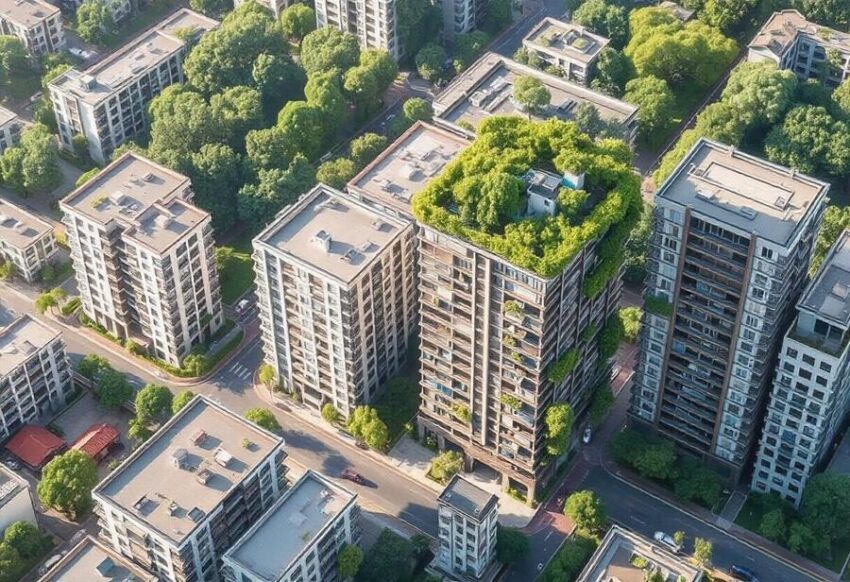
Bioclimatic Architecture Explained: Understanding Sustainable Design
As the world becomes increasingly aware of the need for sustainable living, bioclimatic architecture stands out as a beacon of hope. This innovative approach to design not only focuses on reducing energy consumption but also harmonizes buildings with their natural environment. How does it work, and why is it important? Lets delve into the fascinating world of bioclimatic architecture.

What is Bioclimatic Architecture?
Bioclimatic architecture is an approach to building design that takes into account the climate and environmental conditions to optimize energy use. This method involves using the natural climate to improve the comfort level inside buildings while reducing the need for artificial heating and cooling. By considering factors such as local climate, sun orientation, and wind patterns, architects can design buildings that work with nature, rather than against it.
The Principles of Bioclimatic Design
1. Orientation
The orientation of a building plays a crucial role in bioclimatic design. By positioning a building to take advantage of natural sunlight, architects can minimize the need for artificial lighting and heating. Proper orientation can also maximize the benefits of cooling breezes during warmer months.
2. Natural Ventilation
Natural ventilation is essential in bioclimatic architecture. By designing buildings with strategically placed windows and openings, it’s possible to improve airflow and reduce reliance on air conditioning. For more insights on this, you can visit natural ventilation design.
3. Use of Local Materials
Utilizing local materials is another key principle. It reduces the carbon footprint associated with transporting materials over long distances and often results in better performance since these materials are naturally suited to the local climate. Learn more about such practices at recycled materials.
4. Passive Solar Design
Passive solar design involves using the suns energy for heating and lighting purposes. This can be achieved through south-facing windows, thermal mass materials that absorb heat, and shading devices that control solar gain.
Benefits of Bioclimatic Architecture
1. Energy Efficiency
One of the most significant benefits of bioclimatic architecture is energy efficiency. By optimizing natural resources, these buildings require less energy for heating, cooling, and lighting, leading to lower utility bills and a smaller environmental footprint.
2. Enhanced Comfort
Buildings designed using bioclimatic principles often provide a more comfortable living and working environment. Natural lighting and ventilation not only reduce energy costs but also contribute to the well-being of the occupants.
3. Sustainability
As sustainability becomes a global priority, bioclimatic architecture offers a viable solution by reducing reliance on non-renewable energy sources and minimizing environmental impact.
Challenges in Implementing Bioclimatic Architecture
Despite its many benefits, bioclimatic architecture is not without challenges. Initial costs can be higher due to the need for specialized design and materials. Additionally, achieving the desired balance between natural and artificial systems requires a high level of expertise.
Case Studies in Bioclimatic Architecture
Several projects worldwide exemplify the success of bioclimatic design. For instance, the Menara Mesiniaga in Malaysia and the Eden Project in the UK demonstrate how buildings can be aesthetically pleasing, functional, and environmentally friendly.
Future of Bioclimatic Architecture
As technology advances and awareness grows, the future of bioclimatic architecture looks promising. Innovations in materials and design techniques will likely make it more accessible and cost-effective, encouraging wider adoption.
Conclusion
In conclusion, bioclimatic architecture offers a sustainable solution for the future of building design. It aligns with the global shift towards eco-friendly practices and provides numerous benefits for both the environment and inhabitants. By embracing this approach, we can create a built environment that is not only functional but also in harmony with nature.

FAQs
What is bioclimatic architecture?
Bioclimatic architecture is a design approach that optimizes buildings according to the local climate and environmental conditions to improve energy efficiency and comfort.
How does bioclimatic design benefit the environment?
Bioclimatic design reduces energy consumption by utilizing natural resources like sunlight and wind, minimizing the reliance on non-renewable energy sources.
Is bioclimatic architecture cost-effective?
While initial costs may be higher, the long-term savings on energy bills and the environmental benefits make bioclimatic architecture cost-effective over time.
For more information on sustainable housing, visit sustainable cities.
This article contains affiliate links. We may earn a commission at no extra cost to you.